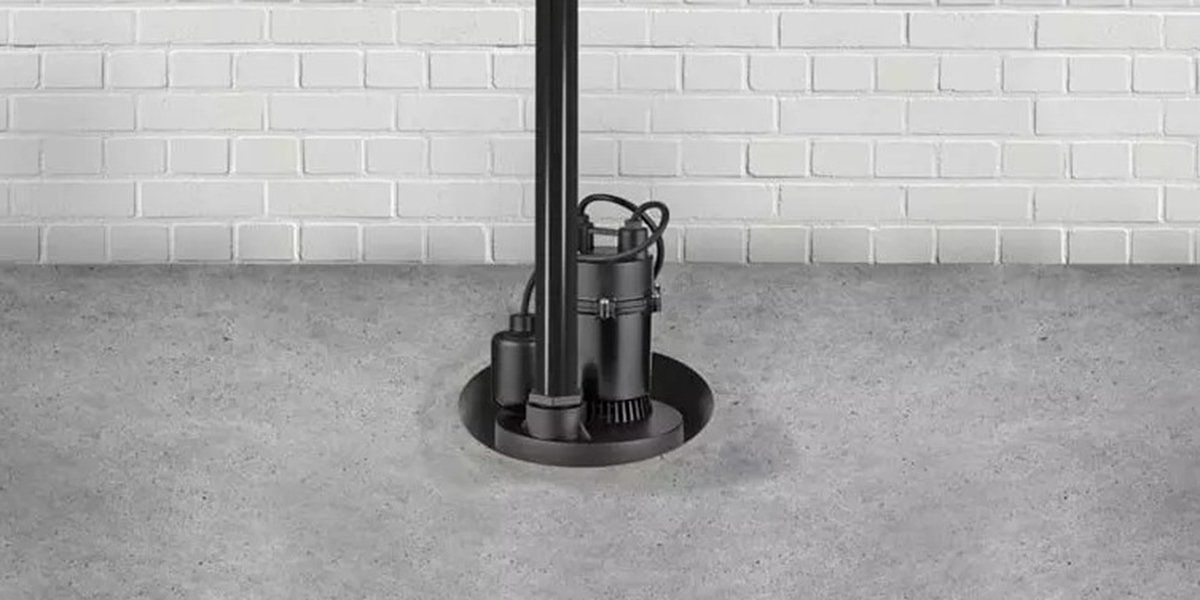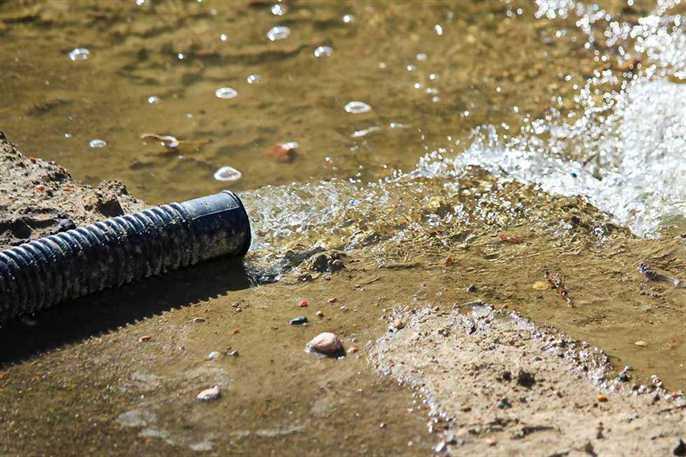Verified Solutions for Caring for a Sump Pump
Verified Solutions for Caring for a Sump Pump
Blog Article
Were you interested in content involving How to Care for Your Sump Pump?

Sump pumps are important components in many homes, specifically in locations prone to flooding or extreme dampness. They help protect against water damage by effectively removing excess water from basements or crawl spaces. Nevertheless, like any other home appliance, sump pumps need routine upkeep to ensure they work efficiently when needed one of the most. Cleaning your sump pump is a vital part of its upkeep, and recognizing how to do it appropriately can conserve you from expensive repair services and prospective catastrophes.
Intro
Keeping a clean sump pump is vital for its correct functioning and durability. Ignoring this crucial task can cause blockages, malfunctions, and eventually, water damage to your property. As a result, finding out exactly how to cleanse a sump pump is crucial for home owners who rely upon these gadgets to maintain their basements dry and safeguarded.
Signs of a Dirty Sump Pump
Knowing when your sump pump requires cleaning is essential for preventing possible breakdowns. Some common indications that indicate a dirty sump pump include weird noises throughout procedure, decreased water circulation, and visible particles in the pit. If you notice any one of these signs, it's vital to cleanse your sump pump without delay to prevent any additional concerns.
Getting ready for Cleansing
Before you begin cleaning your sump pump, it's essential to take some safety preventative measures. Begin by turning off the power to the pump to stay clear of any type of electric mishaps. Furthermore, use suitable protective equipment, such as handwear covers and goggles, to secure yourself from dirt, particles, and possible pathogens.
Understanding the Sump Pump
Prior to diving right into the cleansing process, it's important to have a fundamental understanding of how a sump pump works. Usually set up in a pit or basin below the cellar flooring, a sump pump includes numerous key parts, consisting of a pump, a float switch, and a discharge pipe. When water accumulates in the pit, the float button turns on the pump, which then pumps the water out via the discharge pipe, far from the building's structure.
Detailed Guide to Cleaning Up a Sump Pump
Shutting down the Power
Begin by separating the power supply to the sump pump to avoid any mishaps while cleaning.
Looking For Appropriate Performance
Before re-installing the pump, execute a fast examination to make sure that the float switch turns on the pump appropriately. Pour some water right into the sump pit and observe the pump's procedure. If everything is operating correctly, you can rebuild the pump and reconnect the power supply.
Getting Rid Of Debris and Dirt
Use a bucket or a scoop to get rid of any type of visible particles, dust, or debris from the sump pit. Dispose of the particles correctly to avoid it from blocking the pump or the discharge pipe.
Cleaning up the Pump and Float Switch Over
As soon as the pit is free from debris, thoroughly eliminate the pump from the pit. Inspect the pump and the float button for any type of indications of damages or wear. Make use of a soft brush or cloth to clean the surfaces and eliminate any type of gathered grime.
Purging the System
After cleaning up the pump and float button, flush the sump pit with clean water to eliminate any kind of continuing to be dust or sediment. This will help make certain that the pump operates smoothly and successfully.
Upkeep Tips to Keep Your Sump Pump Clean
In addition to routine cleaning, there are a number of upkeep suggestions you can comply with to keep your sump pump in optimal problem:
Final thought
Cleansing your sump pump is an essential element of its upkeep and ensures that it operates successfully when you need it one of the most. By adhering to the steps described in this guide and incorporating regular upkeep into your regimen, you can expand the life expectancy of your sump pump and shield your home from water damage.
6 STEPS ON HOW TO CLEAN A SUMP PUMP PROPERLY
UNDERSTANDING SUMP PUMPS
Your sump pump plays a crucial role in protecting your home by managing and removing excess water. It primarily functions as a “shield”, guarding your basement against the damaging effects of water accumulation. The pump is housed in a sump pit in the lowest part of your basement, and its job is to pump out any water that collects there.
During heavy rainfalls or when snow melts rapidly, water can infiltrate your basement, posing potential risks like flooding, structural damage, and harmful mold growth. Here, the sump pump springs into action, pumping out the intruding water and directing it away from your home.
SAFETY FIRST
Before cleaning, remember to prioritize safety. Disconnect the sump pump from the power source to prevent any accidental electric shocks. Also, wear sturdy gloves to protect your hands from any sharp or dirty components within the pump.
REMOVE THE SUMP PUMP
After ensuring your safety, the next step is to remove the sump pump from its pit. Doing this might require careful maneuvering as you don’t want to damage any pump components. Once removed, clean the sump pit to remove any accumulated debris or sludge.
INSPECT THE PUMP
Inspect the pump for any visible signs of wear or damage. Check the power cord, float switch, and impeller housing. If any components look worn out or damaged, consider replacing them to ensure optimal performance.
CLEAN THE PUMP
Thoroughly clean the pump with warm, soapy water. Make sure to rid it of any dirt, gravel, or other debris that might impede its performance. You can use a toothbrush to clean the small, hard-to-reach parts of the pump.
REINSTALL THE SUMP PUMP
Reinstall the pump into the sump pit Make sure it’s positioned correctly to remove the water effectively Once it’s back in place, reconnect it to the power source TEST THE PUMP
Finally, pour some water into the pit to ensure the pump works correctly. It should start automatically and begin pumping out the water; if it doesn’t, check the power source and the positioning of the pump.
Remember, while cleaning your sump pump is an essential part of home maintenance, hiring a professional plumber for a thorough inspection and cleaning at least once a year is also important. This will ensure that your pump is in optimal condition, ready to protect your home from potential water damage.
BEST PRACTICES FOR CLEANING SUMP PUMP DISCHARGE PIPES
Regular Inspection: Regularly inspect your discharge pipes, especially during heavy rainfall or snowmelt periods. Look for any signs of blockage or damage. Early detection of problems can prevent serious issues down the line. Periodic Cleaning: Over time, sediment and debris can accumulate in the discharge pipes, impeding the flow of water. Regular cleaning helps keep the pipes clear and functioning efficiently. You can use a high-pressure water jet to effectively clean the pipes. Insulation During Winter: In colder climates, discharge pipes can freeze, blocking the outflow of water. Protect your discharge pipes from freezing temperatures by insulating them with foam pipe insulation. This will ensure the sump pump can continue to discharge water even in freezing conditions. Proper Positioning: The discharge pipe should be positioned to direct water away from your home’s foundation. Improper positioning can lead to water seeping back into the basement. Ensure the pipe is long enough and angled correctly. Installation of a Check Valve: A check valve prevents water from flowing back into your sump pit after the pump has pushed it out. Installing a check valve helps maintain the efficiency of your sump pump and reduces the risk of flooding. Minimize Pipe Turns: Every curve or turn in the discharge pipe can decrease the efficiency of water flow. By minimizing turns and bends in your discharge pipe, you can increase the efficiency of your sump pump. https://www.fullspeedplumbing.com/how-to-clean-a-sump-pump-properly9999/

I'm just very interested in How to Care for Your Sump Pump and I'm hoping you enjoyed reading the new piece. Feel free to pause to distribute this blog post if you enjoyed it. Thanks a lot for your time. Please stop by our website back soon.
Book Service Now Report this page